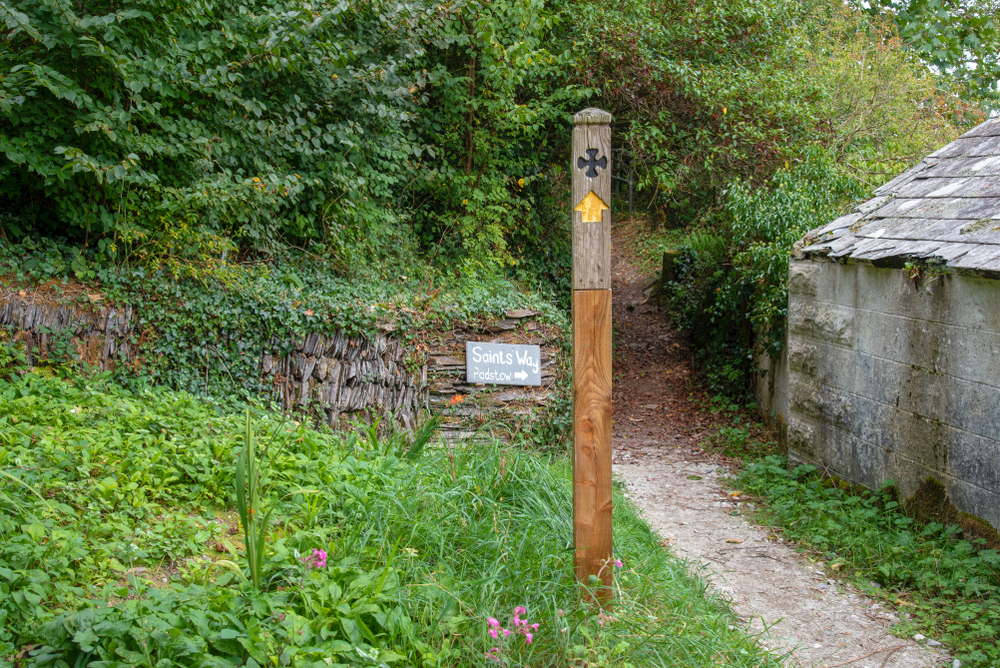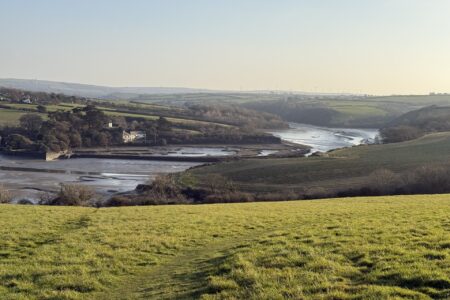The Saint’s Way is a long-distance walking route that crosses the breadth of Cornwall from Padstow to Fowey. Running for some 30 miles through some of the area’s most beautiful and wild scenery walkers these days tend to tackle it in sections, over two or three days. But this is no ordinary footpath, one of the things that makes it so special is the real sense of following in the footsteps of travellers from the past.
History, myth and discovery
The path that hikers follow today has been in use for hundreds, almost certainly thousands, of years. Known as Forth an Syns in Cornish, The Saint’s Way began as a prehistoric trading route, much like the Tinner’s Way in West Cornwall, then became a medieval merchants’ track and a pilgrims’ footpath.
It is thought that prehistoric tin traders would have used this route to transport their wares from coast to coast, meeting with other traders from Ireland, Wales and Brittany along the way, exchanging goods and ideas throughout the Bronze Age and beyond. This trans-peninsular route lasted into the Roman occupation, when between 50-55AD a mineral trading centre was established at Nanstallon.

During the 14th and 15th centuries, when many of the faithful from Wales and Ireland were making their way to the continent on pilgrimage, they and other seafarers would often disembark from their ships at Padstow on the Camel Estuary and walk across Cornwall to the Channel coast, rather than risk navigating the notorious waters around Land’s End.
The Saint’s Way between Padstow and Fowey
The Saint’s Way, which passes numerous wayside crosses, holy wells, chapels of rest and churches, is a physical reminder of those pilgrims’ journeys too and it is also believed that the route was followed by the Christian missionaries of the Dark Ages as they ventured into the untamed interior countryside in search of converts.
The significance of the path was forgotten during the 19th century and much of the route was reclaimed by nature, but in 1984 two villagers from Luxulyan, Cliff Townes and Alf Fookes, happened to discover of a section of the abandoned pathway that was still surfaced with ancient foot-worn cobblestones. This sparked their interest and after they uncovered a series of overgrown granite stiles they decided to try and revive the whole length of the forgotten trackway.
It became a community project and with the combined efforts of volunteers and local authorities The Saints’ Way was reopened as a walking route in 1986.
Today The Saint’s Way passes through some of Cornwall’s loveliest, most untouched and diverse scenery. Strolling just a short section of it can reward the walker with a truly peaceful escape from modern life.
The path winds through wooded valleys, along riverside tracks and traverses rocky moorland heights, it passes some of Cornwall’s most isolated settlements and ancient prehistoric sites. And, unsurprisingly given its age, it is a route that is also bursting with myth and legend.
Cornish Saints
There are the various saints of course, St Merryn, St Issey, St Breock, St Noet, St Keyne, St Tudy and St Blazey to name just a few, each with their own stories to discover. At the well of St Keyne for example you can remember the tale of this pious and independent female saint. Legend has that Saint Keyne died beside the well and blessed it when she passed, since then the waters are said to have magical properties. In the past newly wedded couples used to visit the well because it was believed whoever drank from it first would have the upper hand in the marriage!
From the Padstow Mermaid to Jan Tregeagle’s spirit at Dozmary Pool, from the hermit of Roche Rock to the piskies of Luxulyan, from the carved Jubilee Rock at Blisland to the prehistoric Longstones on St Breock Downs, with each discovery it becomes clear that The Saint’s Way is so much more than a footpath!


